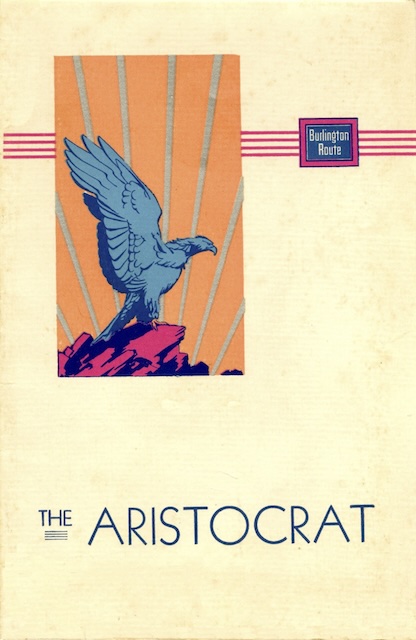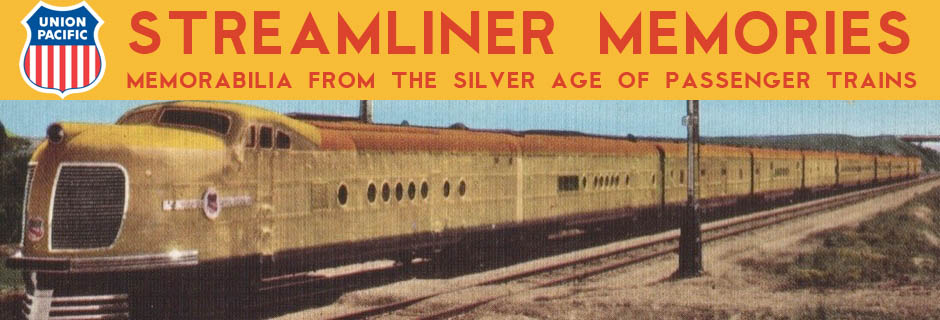In a profound example of poor timing, just a few weeks after the stock market crash that heralded the beginning of the Great Depression, Burlington inaugurated a new Chicago-Denver train called the Aristocrat. To equip the train, along with another new train between Chicago and Omaha/Lincoln called the Ak-Sar-Ben plus new equipment for an existing Chicago-Twin Cities train called the Black Hawk, Burlington ordered 45 sleeping cars from Pullman and produced 35 other cars, including coaches, diners, and observation-lounges, in its own shops (possibly by refurbishing existing cars).

Click image to download a 1.4-MB PDF of this 20-page booklet.
Because the Burlington was 80 years old in 1930, these cars were called the “Anniversary Fleet,” and have previously been described by press folders for the Aristocrat and Black Hawk and Ak-Sar-Ben. Today’s booklet was for ordinary passengers and includes interior photos of many of the cars on the train.
There is some on-line confusion about when these trains made their first runs. As noted on the title page of this booklet, the company’s 80th anniversary took place in 1930, and several on-line sources say the Aristocrat began operating that year. Some, however, say 1929. There is also confusion over the Black Hawk, as some sources say 1930 and others 1927.
It turns out the 1927 date is correct for the Black Hawk. While it was re-equipped in 1929, a train by that name was operating as early as 1927, as shown by Burlington’s May 1927 timetable. In 1926, it was simply called trains 48 & 49.
The other two train names were new for the anniversary fleet. An article in the March 8, 1930 Railway Age says the new fleet began running “in the latter part of December” 1929. It turns out the exact date was December 21, 1929. That would have been the first day the Aristocrat name was used; as this booklet notes, prior to that it was the unromantically named Chicago-Colorado Limited (which was actually named Chicago Limited eastbound and Colorado Limited westbound). Similarly, the Ak-Sar-Ben was the successor to the Nebraska Limited.
This replacement of what I call evocative names for destination-oriented names took place mainly during the Golden Age of passenger trains, roughly 1897 to 1930, reflecting the fact that trains were increasingly used by tourists and vacationers rather than just by businessmen and immigrants. While a businessman would want to know that the train he was on was going to the place he wanted to go, vacationers were attracted by romantic terms such as the Oriental Limited, Chief, and Golden State.
The Burlington was late to this trend. Before the Black Hawk, all of its trains had such prosaic names as Missouri Limited, St. Louis Limited, and — only slightly less boring — Daylight Flyer, which went between Kansas City and St. Louis. These names could even cause some confusion as it had at least three Chicago Limiteds on its timetable, one from Denver, one from Kansas City, and one from the Twin Cities. With the Aristocrat and Ak-Sar-Ben (Nebraska spelled backwards), Burlington had finally adopted this Golden Age trend just as that age was ending.
